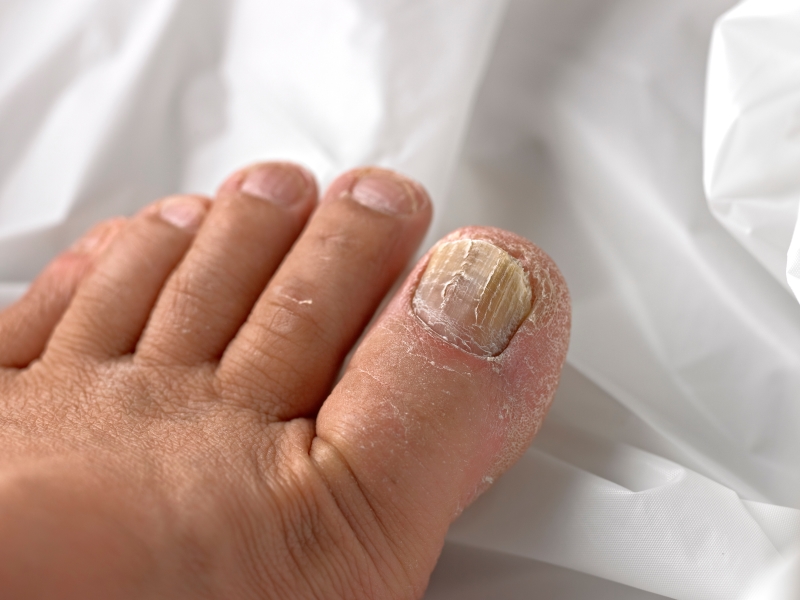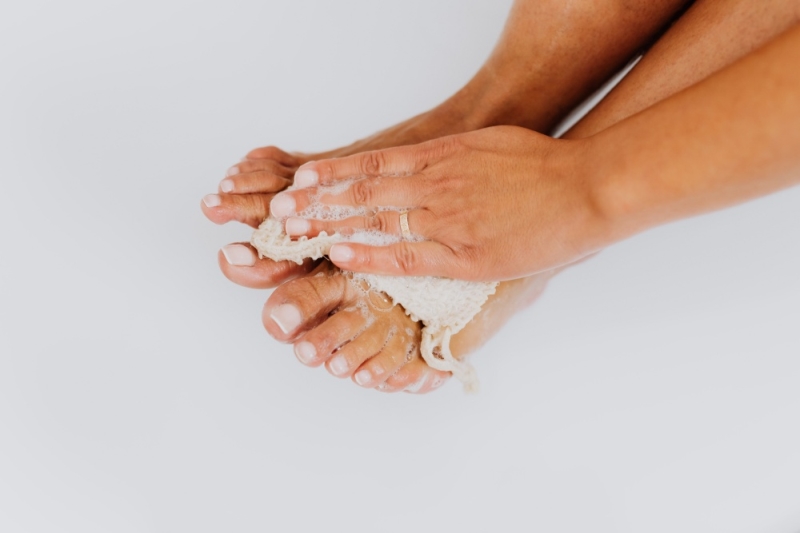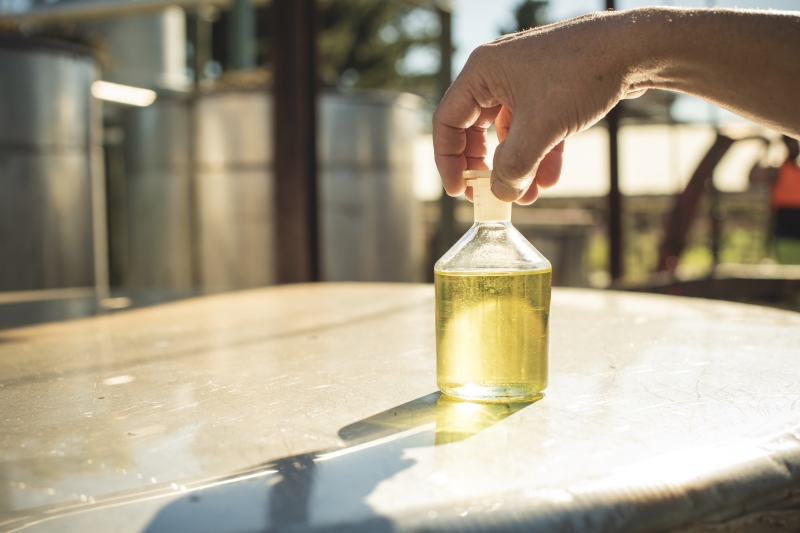As the natural process of ageing unfolds, people encounter a range of unexpected health challenges, including, in some instances, the development of toenail fungus.
Nail fungus can be a sensitive issue and many are reluctant to discuss it openly. This condition can be both embarrassing and notoriously difficult to treat and can affect the aesthetic appearance of the affected nails. It is crucial to emphasize that experiencing toenail fungus carries no reflection on personal hygiene.
Toenail fungus is a surprisingly prevalent issue. Statistics reveal that approximately 1 out of every 10 individuals receives a diagnosis of toenail fungus, a figure that notably rises to 2 out of 10 for those aged 70 and above.
In this article, we will provide comprehensive insights into toenail fungus, shedding light on its prevalence and exploring the potential therapeutic benefits of mānuka oil in addressing this common yet undesirable fungal ailment.
What is Toenail Fungus?

If there are changes in the toenail—such as an unusual odour, thickening, crumbling, yellowing, or lifting from its nail bed, resembling detachment—it is highly probable that this is toenail fungus.
This condition, medically termed as onychomycosis, signifies a fungal infection of the nail, initiated by various fungal organisms or fungi. Among the most prevalent causative factors are:
- Fungal organisms called dermatophytes
- Trichophyton rubrum (a type of dermatophytic fungus)
- Non-dermatophytes like moulds and yeasts
Onychomycosis can affect the toenails, fingernails, or both. It starts with one nail and spreads to other nails, and in extreme cases, it affects the skin too.
Risk Factors that Cause Toenail Fungus
- Age – Toenail fungus rarely occurs in children and commonly affects adults who are 65 years old and above.
- Climate – Individuals residing in hot, humid, or tropical climates are more susceptible to developing toenail fungus.
- Health condition – The following health conditions are at a higher risk for getting toenail fungus:
- Athlete’s foot (or another skin infection caused by fungus)
- Psoriasis
- Diabetes
- Cancer
- Are undergoing chemotherapy
- A previous nail infection
- Had a nail injury or nail surgery
- Poor blood circulation
- Received an organ transplant
- A weakened immune system caused by a disease (i.e.human immunodeficiency syndrome (HIV))
- Lifestyle – The risk of getting a toenail fungus increases with:
- Smoking
- Frequently have wet feet or hands throughout the day
- Spending an extensive amount of time in or around water
- Wear plastic gloves for several hours every day
- Walking barefoot in hot, humid places like a steamy pool area, sauna, public shower, or locker room
- Naturally sweaty feet
- Being an athlete
What Causes Toenail Fungus?
Fungi, which are diminutive and often imperceptible organisms, typically infiltrate nails through three primary avenues: by entering the space between the nail and toe, exploiting a minor cut in the skin surrounding the nail, or taking advantage of a crack in the nail itself. Initially, this infection manifests as a white or yellowish spot at the tip of the nail and gradually progresses beneath the nail bed.
Fungi thrive in warm and moist environments, with the space beneath a nail being an ideal breeding ground. Other conducive locations include perspiration-soaked socks or shoes, snug-fitting attire such as pantyhose or workout gear, and the tiled floors of gym showers.
Commonly, individuals contract this nail infection through direct skin-to-skin contact with someone who is currently afflicted with a fungal infection, such as athlete’s foot or ringworm on their hands. Sharing contaminated towels or nail clippers can also facilitate transmission, underscoring the importance of vigilance during visits to nail salons. Moreover, it is essential to recognize that bedding and linens are not exempt from potential contamination. If an individual with toenail fungus sleeps barefoot, they can shed fungal spores onto bedsheets and comforters, rendering them contaminated as well.
For those who may be prone to stubbing their toes, extra caution is advisable, as such incidents can lead to toenail bed injuries, providing an unwelcome entry point for fungal invaders.
Is Mānuka Oil Good for Toenail Fungus?

Mānuka oil is a powerful natural substance, distilled from the leaf of the mānuka tree and used as traditional remedy by the Māori people of New Zealand, rich in potent antimicrobial, antifungal, antiviral, antibacterial, and anti-inflammatory properties. It is a promising organic remedy in battling toenail fungus.
Mānuka oil, also known as Leptospermum scoparium, is obtained by steam distillation of the leaves and branches of the mānuka tree which belongs to the Myrtaceae family.
The secret ingredient behind this holistic healer is its abundance of bioactive compounds triketones, sesquiterpenes, and monoterpenes with triketones taking the lead in fighting against toenail fungus thanks to its antimicrobial properties.
Exploring the Benefits of Mānuka Oil for Treating Nail Fungus
Tackling a fungal infection in the toenail is a formidable challenge because the toenail fungus extends beyond the surface, infiltrating the nailbed itself. This is precisely why many topical treatments fall short as they can only address superficial skin layers.
Mānuka oil stands out as a solution that delves deeper, effectively penetrating even the thickest nail beds. It achieves this by working in harmony with the body’s natural processes, rather than merely acting upon the surface. In cases of severe fungal infections, oral medications are often favoured, as they combat the infection from within.
Does Mānuka Oil Kill Toenail Fungus?
Yes. Mānuka oil’s formidable antifungal properties combat toenail fungus by halting the growth and reproduction of fungal organisms. This potent oil disrupts fungal cell membranes, interferes with crucial cellular processes, and hinders fungal enzyme systems.
Beyond its antifungal prowess, mānuka oil also boasts anti-inflammatory and antioxidant effects, contributing to the healing process of nails and promoting overall nail health.
Conventional Antifungal Treatments vs Mānuka Oil
When it comes to combating toenail fungus, many individuals explore a wide array of treatment options, including:
- Over-the-counter (OTC) antifungal creams or ointments
- Oral antifungal medications
- Surgical procedures/laser removal treatments (for severe cases)
While several topical creams are available and do provide some relief, they often fall short of achieving the effectiveness offered by natural alternatives. This disparity arises primarily because conventional treatments may contain chemicals that, while not necessarily harmful, lack the capacity to assist the body in combating the fungus as effectively as natural remedies can.
Fungal infections can lead to secondary bacterial infections, resulting in symptoms such as inflammation, pain, and swelling. Managing such infections often necessitates a multifaceted approach that incorporates antimicrobial, anti-inflammatory, antiviral, and antibacterial properties.
Fortunately, mānuka oil possesses all of these qualities. Unlike conventional treatments, which primarily target fungi, mānuka oil’s broad-spectrum antimicrobial properties extend their effects not only to fungi but also to bacteria and various other microorganisms.
Furthermore, choosing mānuka oil as a natural remedy offers the advantage of minimal side effects compared to traditional antifungal medications, which can often lead to issues like skin irritation and potential liver toxicity.
How to Get Rid of Toenail Fungus Naturally with Mānuka Oil

Using mānuka oil to treat toenail fungus can be done at home easily with these steps:
- Wash feet and toenails to remove any dirt.
- Trim nails to lessen their thickness. This will help improve the oil’s penetration.
- Apply a few drops of mānuka oil on the infected nail(s) using a clean cotton ball, cotton swab, or cloth.
- Massage the mānuka oil gently into the infected area and surrounding skin to ensure the whole area is covered.
For best results, repeat this process twice a day: once in the morning and once before bedtime for a couple of weeks, until the fungus clears up.
Bonus tip: For sensitive skin prone to skin irritation from undiluted oil, dilute mānuka oil with a carrier oil like olive oil or coconut oil before application.

